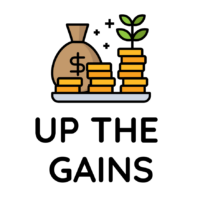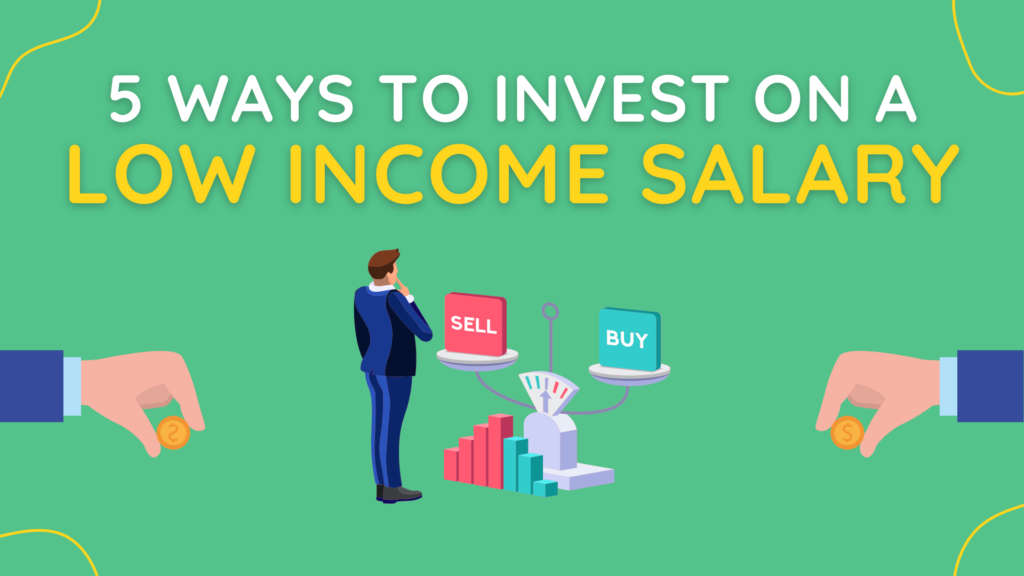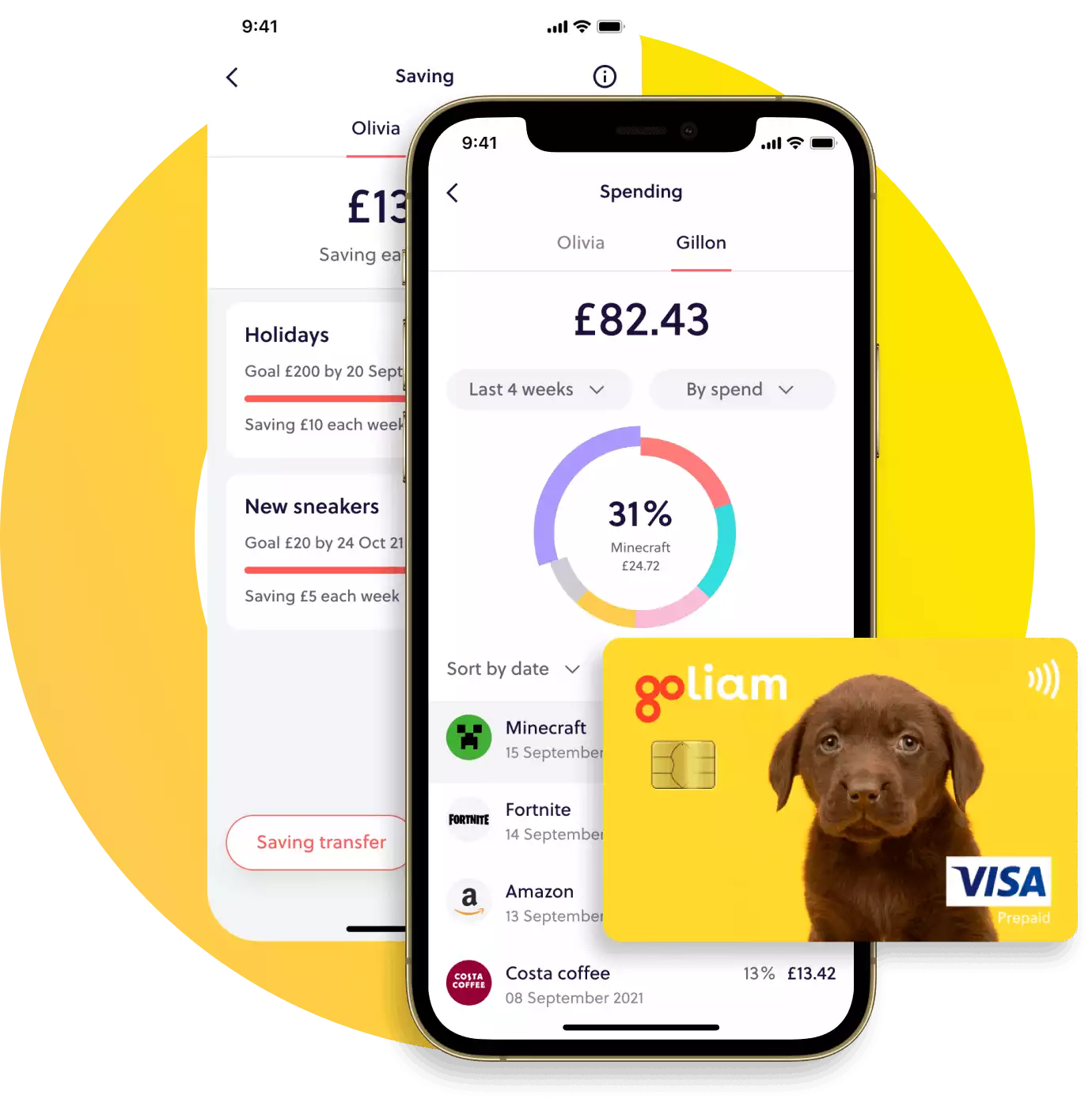
Sammie Ellard-King
I’m Sammie, a money expert and business owner passionate about helping you take control of your wallet. My mission with Up the Gains is to create a safe space to help improve your finances, cut your costs and make you feel good while doing it.
Many of us live paycheque to paycheque. Some try to stash our cash inside a savings account and dip into it like a boiled egg.
Others invest their money, and usually, those are the ones that have one less thing to worry about in their old age. Investing small amounts can have a huge difference and we’ll show you why.
Money doesn’t buy you happiness, but it pays for the journey.
Key Takeaways
Use a low-entry or commission-free trading platforms for lower fees
Check out expert robo-advisors
Invest in Index Funds or ETFs
Open high-yielding savings accounts to support your growth
Drip-feed your money into your investments
Table of Contents
How to invest on a low income?
Low income investing isn’t just a dream it’s totally possible. I often hear people say I don’t earn enough to invest. Think again, my friends. You can invest for as little as £1 these days.
One of the most incredible things I have ever done for myself was to learn the best places to invest my money.
When I started, I was paying what now seems like ridiculous fees on trades, but fortunately for you, there are now hundreds of places you can invest for less than a pint of milk!
We’re not known for investing in the UK, and most don’t ever learn how to trade or invest in stocks. Only a third of us invest, and only 22% make a success of it.
Pretty much all the 22% are long-term investors. These individuals put the time in and invest over five years or more, and some have for their entire lives.
Those who invest for ten years or more by adopting a buy-and-hold strategy are 97% likely to make a profit. Not bad!
So, how do I do it?
Well, technology.
The rise of digital investment firms, pension providers and banking has given the little guys like us a chance. These new investment firms are often super easy to sign up for and, in some cases, do all the hard work for you.
Sounds dreamy right? Well, it is!

🎙️ Listen To Our Latest Podcast Episode🎙️
Join us with Emma Young, school teacher and Founder of the investing channel InvestEm.
We discuss how Emma got over her initial fears of investing, starting with small amounts and building up her confidence over time.
It just goes to show you that anything is possible!
Get the full episode or access the entire back catalogue of The Money Gains Podcast episodes.
Investing For Low Income Earners - The Start
Before you invest your money, though, we encourage you to have done these three things:
Pay off any high-interest debt like credit cards, overdrafts and loans – do this first, or you’ll be forever paying out money in interest
Create a comprehensive budget and stick to it for at least three months
Spend less than you earn – you’ll never be financially stable until you cut out spending on stuff you don’t need.
You can check out our smart money budget builder via the shop.
It has all your household budgeting needs, net worth calculator, debt repayment planning, financial freedom calculator and more, all in one easy-to-use excel document.
Right, I know you want to make some money so let’s get to it.
How To Invest With Little Money - The Next Step!
Investing with a small amount of money can be a smart way to build wealth over time, even if you’re starting with just a few pounds.
Here’s how you can get started in the UK:
Budget for Investing: Even a small monthly sum, such as £25, can be a good start. Adjust your budget to set aside a consistent amount for investing.
Open a Stocks & Shares ISA: Use this tax-efficient account to invest in a diversified mix of funds with low fees, protecting your returns from tax up to a certain amount each year.
Choose Low-Cost Index Funds or ETFs: These funds provide diversification and have lower fees, which is important for not eroding small investments over time.
Use Micro-Investing Apps: Consider apps that round up your change from everyday transactions and invest it automatically.
Set up Regular Contributions: Automate your investments to take advantage of pound-cost averaging, which involves regularly buying a fixed amount of a particular investment.
Reinvest Dividends: Opt to have any dividends automatically reinvested to compound growth, maximizing the returns on your investment over time.
Starting small doesn’t mean thinking small, so approach your investments with a long-term perspective and patience.
Remember, the key to building wealth is consistency and the willingness to keep learning and adapting your strategy as you go along.
Discover your financial independence with our hand-picked investing apps designed specifically for beginners - it's wealth-building simplified.
1. Are low-commission trading platforms worth it?
The rise in digital investment firms means that anyone can now invest from the comfort of their own homes with a smartphone.
These new-age investment firms often have shallow barriers to entry, with companies like eToro and FreeTrade now offering commission-free trading.
Many other firms have dropped their commission to attract new clients, and it’s an opportunity for folks like us to get in there!
Most established brokers will charge up anything from £5 – £25 per trade, which, if you’re only investing, say £100, is anywhere between 5-25% each time. No thanks!
Commission-free trading allows individuals with all types of budgets to get started. Essentially these platforms now cater to investment for low income earners by letting people start with £1 in some cases.
The average account size on eToro is £2500, whereas the average account on brokers with slightly higher fees, like AJ Bell or Hargreaves Lansdown, is £100,000.
Retail investors are now springing up from everywhere, and of course, with the cost of living soaring, we want to maximise every penny we can.
Commission-free trading means you could be putting small amounts away and building your net worth over time without paying high fees.
We encourage you to at least learn the basics before you begin investing.
2. Why you should consider robo-advisors?
If you can’t be bothered to learn about the stock market, Robo-advisors are an excellent investment method.
Robo-advisors are relatively new to the market, landing on the scene around ten years ago. However, they have become a place for inexperienced investors to dip their toes in the markets relatively quickly.
They work by asking you a series of questions to establish your risk tolerance.
Once completed, the robo-advisor will automatically invest your funds into a ready-made portfolio based on your choices.
The key to this style of investing is in the name. These accounts are not managed by humans, meaning your entry costs are often lower.
Most Robo-advisors take 0.25-0.5% per year, meaning if you invested £100, they’d take 25-50p a year. Not bad!
Some great options are available on the UK market, such as Wealthify, Nutmeg, and Moneyfarm. They all have different products available that are unique to each investor.
For those looking to test out robo-advisors, Wealthify allows you to get started for as little as £1.
Nutmeg and Moneyfarm offer a more comprehensive suite of products but do need a £500 minimum investment to get started. Wealthify charges 0.6% per year in fees, with Nutmeg and Moneyfarm charging just 0.35%.
Depending on your amount, it might be worth doing a little basic maths before deciding where to invest.

3. Buy Index Trackers or ETFs
My favourite and the most widely used products on the market are Index Funds and ETFs.
Index funds match or track the components of a financial market index, such as the Standard & Poor’s 500 Index (S&P 500) or FTSE 100.
These funds will buy and sell their stocks to match the company’s performance in the index or list.
For example, the Vanguard Total Stock Market Index Fund (VTI) holds the 5000 most prominent companies within the US market. If one of those companies underperforms and drops off the top 5000, it’s replaced by another performing better.
I love this fund because you always hold the best 5000 companies in the US no matter what.
The performance of the VTI is linked to businesses that succeed, so it goes one way, up over the long term!
The VTI has brought in an average of 10.6% per annum since its inception over 50 years ago. It makes it one of the highest performing funds on the market, consistently beating 92% of actively managed funds over ten years or more.
ETFs are slightly different to index funds, and these funds are actively managed, which means they have a Fund Manager controlling them.
They can differ in size and also focus on a specific country, continent or sector, such as electric vehicles, technology or banks.
There are 1000s of ETFs available on the market, but some leaders include Vanguard, Blackrock, ARK and Fidelity.
The great thing about ETFs is they cater for a person’s investment type and risk tolerance. For example, if you want to focus on companies within a sector such as green energy, you can be.
By investing in an Index Fund or ETF, you become diversified. You’re spreading your risk by holding a wide range of stocks.
Building a well-diversified portfolio is key to long-term success, and it protects you against downturns in the market as often; not all your stocks will underperform at the same time.
4. Why should I consider a high-yielding savings account?
Although many like constant access to their money, high-yielding savings accounts like Cash ISAs can be outstanding if you don’t mind tying your money up for a few years.
The interest rates of regular day-to-day savings accounts don’t give you much back. When you factor in inflation, you’re often losing money.
High-yielding savings accounts often provide you with a much higher interest rate than standard ones.
It’s essential to do your research before opening one of these accounts. Make sure you don’t need the money for anything important.
We suggest opening one of these accounts if you already have an emergency fund. An emergency fund is usually around 3-6 months in wages placed somewhere like regular savings accounts that you can easily access.
Once you have this set aside, you can worry about adding to a high-yielding savings account.
5. Use a drip-feed approach
A drip-feed approach means adding over a long period, and you have a bucket full as you put small amounts together over time.
One of the misconceptions is you need lump sums to get started. You benefit from buying at different price points by investing small amounts over a more extended period.
This strategy is pound cost averaging which means your average entry point over time is much lower than those who invest in one go and leave it.
Those who take a more protracted investment approach will also benefit from compound interest over time.
Sammie’s Top Tip 🌶️
Have a percentage split ready to go when you receive unexpected money.
Small investments that make money follow the same principles as bigger investments. It’s only the contribution that changes.
For example, a relative gifts you some cash or you receive an unexpected work bonus you know precisely how you’re splitting it up before you even get it.
Planning ahead like this is what will get you financial freedom.
Then what?
With this money you’ve received, split it three ways. Spend a third (you deserve it), save a third and invest a third.
You should also do something similar with your wages each month. We call this the ‘live a little‘ strategy where you split your monthly wages like this…
40% on your non-negotiables such as rent, mortgage, council tax, water, etc.
30% to live a little. This means what it’s meant to and could be a Netflix subscription, a pint down the pub with your mates, a new t-shirt or your favourite magazines.
30% into savings and investments
This strategy aims to allow you the daily comforts that keep us going throughout our lives. There’s no point saying to someone you must cut out everything you enjoy and invest it all because they’ll end up hating investing.
Investing is supposed to be fun.
MORE LIKE THIS
For more on how to improve your finances, check out our investing for beginners page. Here you can learn the stock market basics and all you’ll need to become a successful investor.
Share this article with friends
Disclaimer: Content on this page is for informational purposes and does not constitute financial advice. Always do your own research before making a financially related decision.




